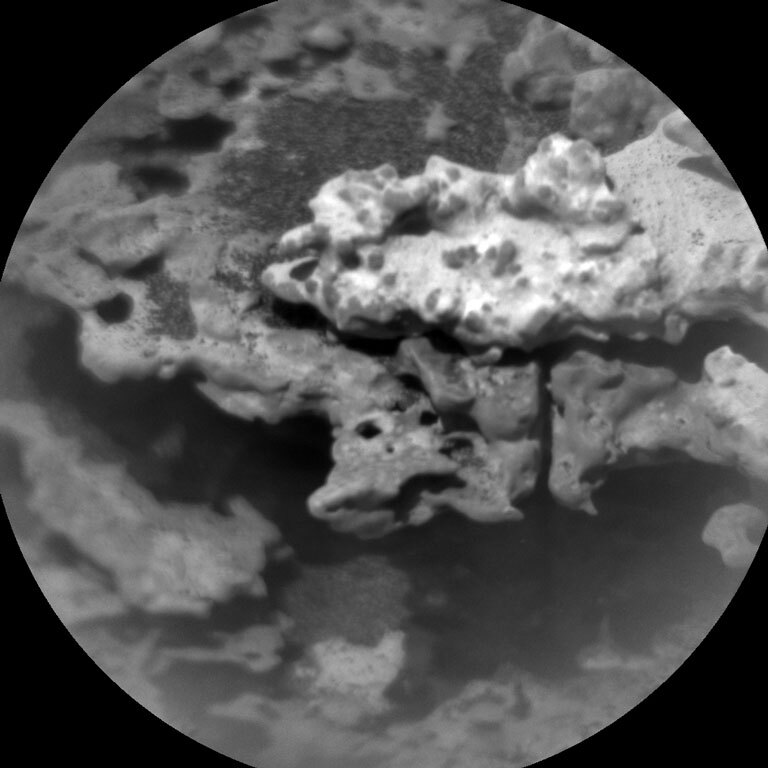2 min read

Today Curiosity is finishing up at a stop designed to investigate diagenetic features—features that formed after the sediment first was deposited—such as veins and color variations within the bedrock. One of these fantastic diagenetic features is shown in the image above, which ChemCam imaged in Monday’s plan. Today’s plan is full of remote science and contact science before the rover drives away to continue traveling towards the sulfate unit.
Veins are abundant in this workspace, and APXS and MAHLI will target a bright white vein near the rover that is called “Busserolles.” ChemCam has a LIBS target on “Quinsac,” which APXS and MAHLI investigated in Monday’s plan. ChemCam will also target the feature “Razac de Saussignac” as a passive observation. Razac de Saussignac is a fresh rock face with interesting color variations that was broken by the wheel when Curiosity drove over it on the previous drive.
The plan also includes a Mastcam mosaic of “Belves” to investigate the stability of the rocks in the Mt. Mercou cliff face and a ChemCam long distance RMI to target potential bedding within the sulfate unit.
After the drive, MARDI will take a twilight image and there will be several atmospheric observations including a dust devil survey and a cloud observation.
Written by Kristen Bennett, Planetary Geologist at USGS Astrogeology Science Center







